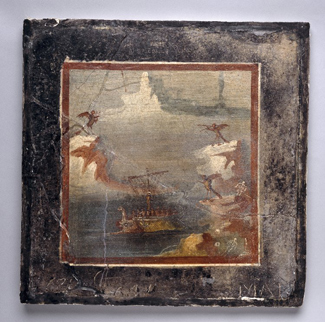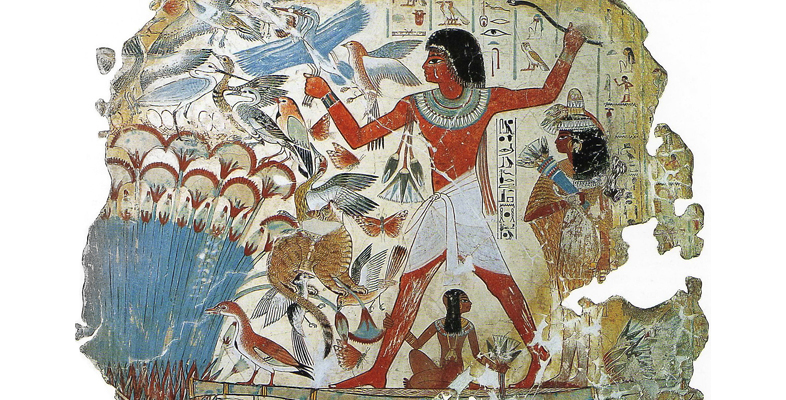9.1 Schäfer’s principles
As we have seen, the normative Western system of representation (or rather the system that has been taken as normative by the West, and that because of the mixture of Western political hegemony and the technical development of photography and its cognates has become dominant) has been perspectival. That is, it employs devices such as foreshortening, of ‘shading’ from light to dark, and the elaboration of the spatial armature of ‘perspective’. This is all done in order to present an ‘accurate’ illusion of bodies disposed in three-dimensional space on a two-dimensional surface when seen from the position of an individual spectator (indeed when seen by such a spectator with one eye). The camera, needless to say, mimics such monocular human perception (while introducing characteristics of its own in respect of various different types of lenses, etc).
This system of representation was definitively realised in fifteenth-century Italy and elaborated in European academies of art over the next four hundred years. It found its antecedents in the classical civilisations of Greece and Rome from the fifth century BC to approximately the fourth century AD (Figure 29).

Ancient Egyptian art, and also the art of many other cultures both ancient and modern, does not do this. It proceeds from a different basis, and produces different effects embodying different meanings. It was that ‘basis’ that Schäfer set out to elucidate in his Principles.
There is no single, universally accepted term to describe the organisational principles Schäfer discovered. Some authors use the term ‘aspective’, to contrast with ‘perspective’, while others feel that this is potentially misleading (because of the partial sense it suggests of only dealing with ‘aspects’ of representation).
Schäfer himself coined a term, that his English translator was forced to render not with a single word but with a complex phrase. Schäfer’s term was ‘geradvorstellig’. In English this is given as: ‘based on frontal images’. The basic distinction at work behind this idea is between perception and conception.
As Schäfer himself writes, ‘Our eyes receive a picture of the world that is essentially different from the idea we have of the physical reality of things’. (p. 80). If you glance across a table to a cup of coffee you will perceive the top of the cup as an ellipse rather than the reality of a circle.
In perception, someone on the road a hundred yards away appears smaller than someone standing outside your window even though they are both the same size.
Schäfer recounts the instance of man, unused to perspective, who rejected a perspectival portrait because it showed the side of his moustache that was furthest away from the viewer as being smaller than the one closer to; when he knew that his moustache was even.
Schäfer’s insight was that the art of ancient civilisations, as well as that of contemporary cultures uninfluenced by Western art, ‘does not follow the dictates of the eyes’.
Schäfer’s follower and editor, the German Egyptologist Emma Brunner-Traut, puts it even more dramatically in her Epilogue to the English edition of the Principles:
Egyptian pictures are ... to an extraordinary degree independent of the sense of sight (p. 429)
